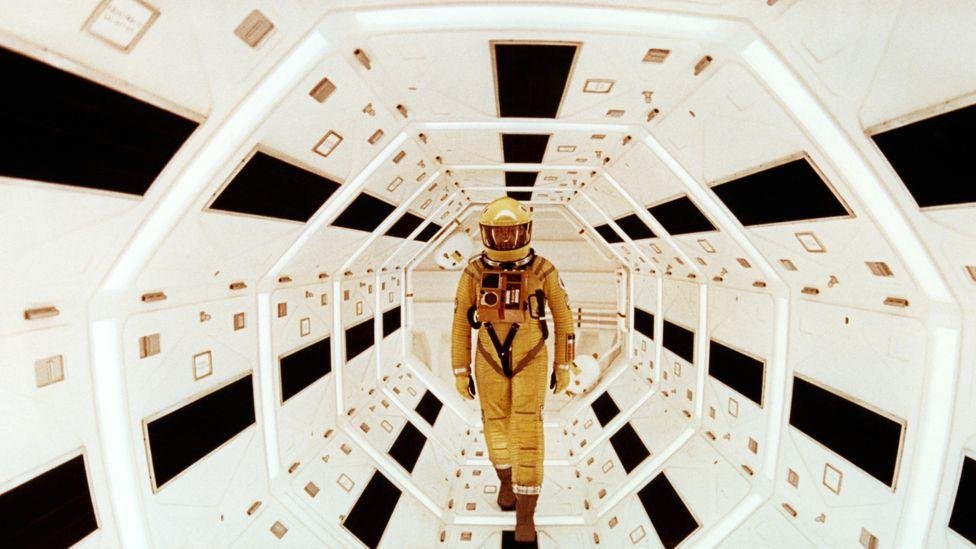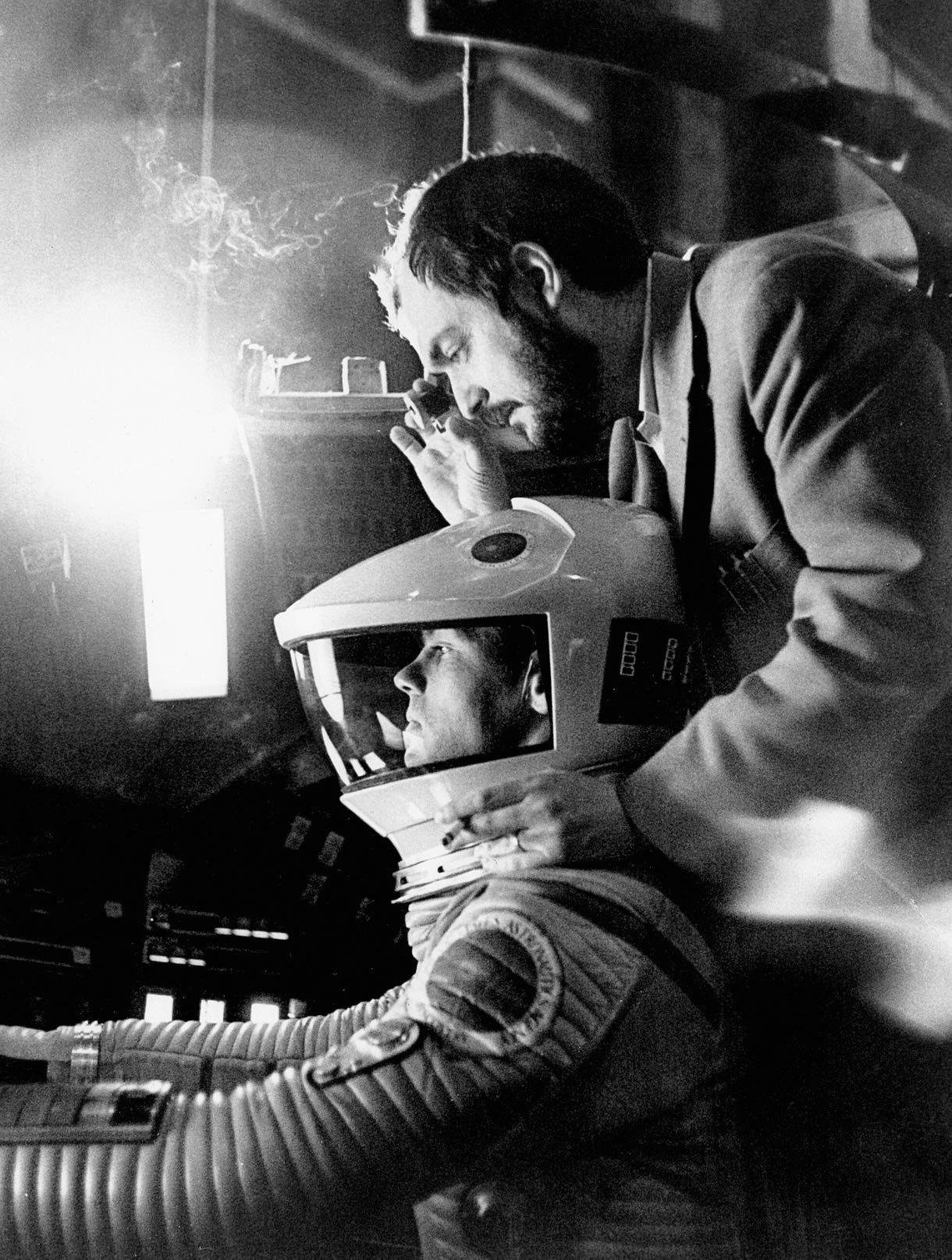A Closer Look at 2001: A Space Odyssey
In 1968, Stanley Kubrick’s 2001: A Space Odyssey was released, and it quickly became a landmark in science fiction filmmaking. Although it was initially met with mixed reviews, it has since been recognized as a groundbreaking piece of cinema that redefined the genre. 2001’s complex narrative and ambiguous themes have continued to intrigue audiences, sparking countless discussions and debates over its meaning. In this article, we will take a closer look at this cinematic masterpiece and attempt to unravel some of its mysteries.
In 1968, Stanley Kubrick’s 2001: A Space Odyssey was released, and it quickly became a landmark in science fiction filmmaking. Although it was initially met with mixed reviews, it has since been recognized as a groundbreaking piece of cinema that redefined the genre. 2001’s complex narrative and ambiguous themes have continued to intrigue audiences, sparking countless discussions and debates over its meaning. In this article, we will take a closer look at this cinematic masterpiece and attempt to unravel some of its mysteries.

Introduction
Welcome to the latest article from our cinema, movies and actors blog! Today, we will be taking a deep dive into one of the most iconic science-fiction films of all time: “2001: A Space Odyssey.” Directed by the legendary Stanley Kubrick, this movie has captivated audiences for over five decades with its stunning visuals, unforgettable score, and enigmatic storyline. In this analysis, we will explore the various themes and interpretations of this groundbreaking film, as well as examine the legacy it has left on the world of cinema. So buckle up and get ready to blast off into the cosmos with us!
Director and Writer
When discussing 2001: A Space Odyssey, it’s impossible not to acknowledge the genius of director and writer Stanley Kubrick. His meticulous attention to detail and visionary approach to filmmaking resulted in a groundbreaking masterpiece that continues to captivate audiences today. From the iconic opening sequence to the mind-bending finale, Kubrick’s direction sends viewers on a journey through space and time that challenges our perceptions of reality. The film’s screenplay, co-written by Kubrick and science fiction author Arthur C. Clarke, is equally impressive in its exploration of profound themes such as evolution, artificial intelligence, and the nature of humanity. Together, Kubrick and Clarke crafted a cinematic experience that remains a cornerstone of sci-fi cinema and a testament to the power of visionary filmmaking.
Symbols and Themes
In Stanley Kubrick’s “2001: A Space Odyssey,” symbols and themes play a crucial role in the film’s narrative and overall meaning. From the mysterious black monolith to the infamous “Star Gate” sequence, the film is filled with potent imagery that hints at a deeper, more profound story. Themes of evolution, technology, and the nature of humanity are explored in a non-linear and enigmatic way, leaving audiences to draw their own conclusions. As a result, “2001” remains a cinematic masterpiece that continues to fascinate and inspire viewers to this day.

Characters
Characters play a crucial role in any movie, and Stanley Kubrick’s 2001: A Space Odyssey is no exception. The main character, Dr. David Bowman, is a complex and deeply flawed individual who undergoes a transformative journey throughout the film. The character of HAL 9000, the ship’s intelligent computer, also adds a layer of intrigue and suspense to the plot. Through their interactions, the film explores the theme of the relationship between humanity and technology. Kubrick’s masterful direction and the exceptional performances of the actors bring these characters to life, making 2001: A Space Odyssey an enduring classic of the sci-fi genre.
Visual Effects and Cinematography
When it comes to the visual effects and cinematography of “2001: A Space Odyssey,” they are undoubtedly groundbreaking and ahead of their time. The film used practical effects and miniatures to create the vastness of space, while also utilizing innovative techniques such as the slit-scan camera to create the mesmerizing stargate sequence. The use of color and composition in the film’s cinematography adds to the overall otherworldly feel, making it a true cinematic masterpiece. The visual effects and cinematography of “2001: A Space Odyssey” set a new standard for science fiction films that still influences filmmakers today.
Music
Music plays a pivotal role in Stanley Kubrick’s masterpiece “2001: A Space Odyssey.” The use of classical music, particularly Johann Strauss II’s “The Blue Danube” and Richard Strauss‘s “Also sprach Zarathustra,” creates a mesmerizing and unforgettable experience for the audience. The music is integrated seamlessly into the film and elevates the mystique and grandeur of the visuals. Kubrick’s use of music is a testament to the power of sound in cinema and emphasizes the importance of a well-crafted soundtrack in any film.

Interpretations and Theories
When it comes to analyzing a film as complex and enigmatic as Stanley Kubrick’s “2001: A Space Odyssey,” interpretations and theories are abundant. From discussions of its religious symbolism to its commentary on human evolution, there is no shortage of analysis when it comes to this science fiction masterpiece. Some theories suggest that the film is a commentary on the dangers of artificial intelligence, while others argue that it is a meditation on the nature of human consciousness. Regardless of one’s interpretation, “2001: A Space Odyssey” is a film that has inspired countless discussions and debates among film enthusiasts and scholars alike.
Legacy and Influence
When it comes to discussing the legacy and influence of 2001: A Space Odyssey in the world of cinema, it’s impossible to overstate its impact. Stanley Kubrick’s masterpiece has been celebrated and analyzed for over five decades, and its exploration of humanity’s relationship with technology and the universe continues to inspire filmmakers to this day. Its iconic imagery and groundbreaking use of special effects have influenced countless films, from Star Wars to Interstellar. But perhaps its greatest legacy lies in the way it challenged audiences to think deeply and critically about the nature of existence, leaving an indelible mark on the medium of cinema itself.
Awards and Reception
The cult classic “2001: A Space Odyssey” not only revolutionized the sci-fi genre, but it also garnered several awards and high reception from the public and critics alike. The film received an Academy Award for Best Visual Effects, as well as a Hugo Award for Best Dramatic Presentation. It also earned four nominations at the BAFTA Awards. Stanley Kubrick’s masterpiece was initially met with mixed reactions upon release, but it has since been praised for its groundbreaking visual effects, complex themes, and ambitious storytelling. “2001: A Space Odyssey” remains a staple in the world of cinema and continues to captivate audiences with its enigmatic and awe-inspiring storytelling.
Conclusion
In conclusion, “2001 A Space Odyssey” is a groundbreaking film that has left a lasting impact on the movie industry. Kubrick’s visionary direction, coupled with the stunning visual effects, creates a surreal experience for the audience that has stood the test of time. The film’s themes of evolution, artificial intelligence, and human mortality are still relevant today, and continue to provoke thought and discussion among film enthusiasts. “2001 A Space Odyssey” is a true masterpiece, and its influence can be seen in countless films that have followed in its wake.
For more information about 2001 A Space Odyssey analysis, including movie details, cast information, etc..
check out the filmaffinity page.



